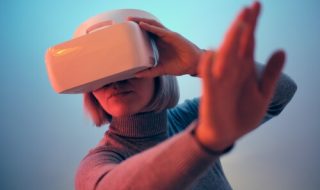
Any business can benefit from the introduction of some elements of the Internet of Things. It can be especially useful now, while it is not a particularly widespread tendency, and the majority of businesses are just getting to grips with IoT and its implications.
However, one industry that can potentially benefit the most is also the one that so far has been a bit wary of the potential open by IoT. Healthcare practitioners are often skeptical about the possibility of machines and networks replacing human specialists. Nevertheless, constant lack of said specialists, increasing workloads, and outdated systems simply call for the introduction of some game-changing technology – and IoT can become exactly this. In this article, we will cover a few ways in which a healthcare business can grow with its help.
Obtaining Personal Health Data
By supplying a patient with a wearable device that sends a signal when, for example, his heart rate is going out of whack or when he forgets to take his insulin, a healthcare business can greatly improve the quality, quantity, and timeliness of information gathered on different aspects of patient’s health. Besides, it saves the time human employees would have to spend doing it all manually.
Scheduling Automation

Robot helps nurses schedule tasks on labor floor
Schedule creation is probably not the first thing that comes to mind when hearing about the IoT, but think about it: the most important resource of any business (and healthcare business in particular) is people working for it. This means that efficient management of these people should be your primary concern. In the typical arrangement, all schedules have to be created manually, which requires one to coordinate the efforts of many people. For larger businesses, it can turn into a pure nightmare, and what’s worse, you are not secured from mistakes. High-tech approaches, like Humanity scheduling solution for healthcare (or using a care app), can decrease the time spent on schedule arrangement by up to 80 percent, forecast future scheduling needs to be based on existing data, allow employees to ask for shift trades without doing a lot of paperwork and so on.
Optimization of Surgical Workflow

5 Amazing Ways That Robots Are Being Used In Medicine
IoT network can automatically notify the patient’s family about his discharge from surgery and many other similar situations. By reducing the need to interact with patients and their families, it both frees up the doctors’ time and allows them to dedicate more time and effort to meaningful interactions with their patients as opposed to interactions for the purpose of imparting trivial information.
Inventory Management
According to a recent survey, 26 percent of surgeons and nurses complain of having to do too much inventory-related paperwork, with another 23 percent claiming they don’t have sufficient time to deal with their patients because of the demands imposed on them by supply management tasks. Introduction of IoT’s connectivity and data sharing can help you get rid of many of these problems, freeing up your staff for their core activities.
Safety
Applications of IoT for safety measures are diverse and depend on the area of use. For example, newborn babies can be fitted with wristbands that allow the hospital’s wireless network to control their location in real time. If the system notices one of them being taken close to the exit door without being signed out, security will receive a critical alert, elevators will stop moving, and doors will lock automatically.
Safe Storage

Cold storage meets big data: Run low-cost analytics in the private cloud
Healthcare is very dependent on how well its storage facilities operate. Samples taken from patients, medications, bank blood – all this should be kept at particular temperatures and in specific conditions. If these are not met, the results may be catastrophic. Wireless sensors installed in laboratories and freezers all but solve this problem – if they notice dangerous changes in temperature they can immediately notify those responsible so that they can take adequate measures. This means that nobody has to manually walk around and check the temperature, saving many man-hours each year.
Data Transfer
Paperwork has been one of the most time-consuming tasks doctors, and nurses deal with for a very long time. It is understandable, taking into account the sensitive nature of their work, but things can be arranged differently. For example, an MRI scan can be arranged, but after it is completed no paperwork is done – the results are automatically transferred to a digital archive, and after that doctors can review it remotely, compare it with previous results and send it to the patient and his family if necessary – all without handling a single sheet of paper.
All these are just examples – the advantage of IoT is that rather than offering typical solutions its application is only limited by one’s ingenuity. It is still a relatively new area, so we hope that this article has given you some ideas you can start using in your own business.




